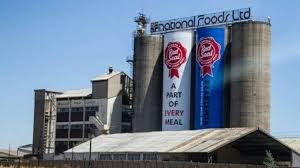National Foods revenue jumps to $128bn
Food processing giant National Foods Holdings Limited’s revenue for the year to June 30,
2022, rose 33 percent to $128,4 billion compared to the previous year, spurred by volume
growth and inflation-driven prices.
During the year under review, total volumes grew 8 percent to 569 000 tonnes when
compared to prior year.
Gross profit grew by 84 percent in absolute terms, mainly due to inflationary gains on
raw material positions.
Operational expenditure grew by 37 percent year on year, with the correction of some
major cost lines occurring in real terms during the year.
At $14,74 billion, operating profit was 301 percent ahead of the prior year comparable
period whilst profit before tax increased by 1 390 percent to $20,4 billion.
Chairman Todd Moyo said this was driven by significantly increased interest costs in line
with higher interest rates as well as a decline in equity-accounted earnings of 41 percent,
largely attributed to the disposal of shares in Pure Oil Industries.
Included in the reported profit before tax is a profit on the disposal of Pure Oil Industries
shares amounting to $5,93 billion.
Profit for the year surged 8 436 percent to $18 billion from $211 million in the prior year.
Just like any other business in the country, Natfoods also felt the heat from the
challenging economic environment.
“The economic environment for the period was challenging, largely on account of the
rate of inflation which continued to accelerate through the year. “Consumer demand
slowed in the second half of the financial year as inflation accelerated, particularly in
respect of high value products,” he said.
Operationally, Natfoods said the flour million division recorded a 1,9 percent decrease in
volumes compared to the same period last year, with a slow-down in the last quarter, as
price increases driven by higher international wheat prices and the reduced availability
of local wheat dampened demand.
However, the installation of the new mill at our Bulawayo site has commenced and the
plant remains on track for commissioning early in 2023.
Mr Moyo said the mill will increase wheat milling capacity by around 2,000 tons per
month and will reduce import dependency.
The group recorded improved volume momentum in the maize unit in the second half of
the year, but volumes still closed 2,3 percent below prior year, largely due to last year’s
excellent harvest.
“Turning to the most recent season, the rainfall was erratic and the harvest has been
further disturbed by unseasonal winter rains. It is anticipated that imports will be needed
to fill the gap before the 2022-2023 harvest and the Group has already started on a maize
importation program.
“Ordinarily, our expectation would have been for improved volumes in the year ahead
following the lower harvest but the opening of the borders to imports of finished
products will likely see volumes remaining flat in the year ahead,” said Mr Moyo.
Stockfeed volumes increased by 12 percent when compared to the prior year. Volume
growth continued to be driven by the poultry sector while beef volumes declined
following the better summer season and consequently improved pastures.
The traded goods unit saw volume growth of 34 percent versus the prior year, largely as a
result of growth in the pasta category while volumes in the snacks division increased by
24 percent against the comparable prior year period, as the increased production
capacity came on stream.
Volumes in the cereals unit grew by 35 percent year on year.
Despite the challenging economic environment, the group is upbeat that anticipated
economic growth will be an advantage to the group. The group expects to maintain
growth and meet consumer demand while expansion is underway for several projects.
Said Mr Moyo: “Notwithstanding the challenging economic conditions during the period,
the group remains optimistic on the overall medium-term trajectory of the economy, as
we anticipate continued growth driven largely by the mining and agricultural sectors.
“Our management teams will continue to focus on ensuring their business models are
robust and fit for purpose.
‘‘Particular focus will be placed on volume growth, cost optimisation as well as ensuring
that working capital deployed in each unit is appropriate for the economic
circumstances.”-The Herald










